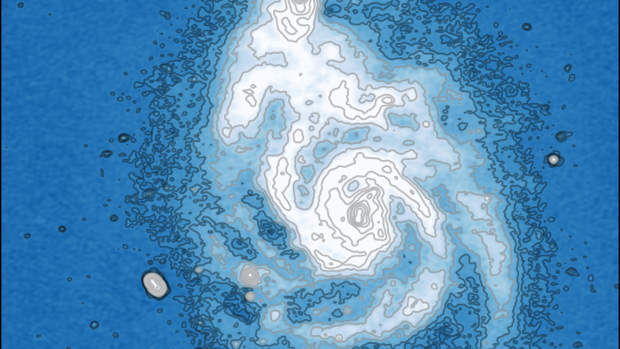
Irish researchers join international team to shed light on black holes
An international team of more than 200 astronomers from 18 countries, including researchers from University College Dublin, has published the first phase of a new sky survey using the Low Frequency Array (LOFAR) telescope, revealing hundreds of thousands of previously undetected galaxies and shedding new light on the physics of black holes and how clusters of galaxies evolve.
Radio astronomy reveals processes in the Universe that we cannot see with optical instruments. In this first part of the sky survey, LOFAR observed a quarter of the northern hemisphere at low radio frequencies.
Approximately 10% of that data is now being made public. It maps 300,000 sources, almost all of which are galaxies in the distant Universe; their radio signals have travelled billions of light years before reaching Earth.
The international LOFAR telescope consists of a European network of radio antennas, connected by a high-speed fibre optic network spanning seven countries. LOFAR was designed, built and is now operated by ASTRON (Netherlands Institute for Radio Astronomy), with its core located in Exloo in the Netherlands.
Machine learning algorithms are being used to automate parts of the analysis, with some of this work being done at UCD on powerful computing clusters.
The Irish station was installed in the grounds of Birr Castle, Co. Offaly in 2017, with support from Science Foundation Ireland; Enterprise Ireland; the Dept of Business, Enterprise, & Innovation; Offaly County Council; the Depart of Culture, Heritage, & Gaeltacht; UCD; TCD; Armagh Observatory; DCU; UCC; NUIG; DIAS; and AIT.
A special issue of the journal Astronomy & Astrophysics has been published collecting 26 papers based on LOFAR research. One such paper from Associate Professor John Quinn, UCD School of Physics, and PhD student Sean Mooney focused on the jets from supermassive black holes that are pointed towards the Earth.
“The LOFAR survey provides us with an unprecedented view of galaxies with supermassive black holes at their centers, and how they evolve,” said Quinn. “The sensitivity and resolution of this LOFAR survey is unparalleled at low frequencies, and the technological advancements required to make this possible are relatively recent.”
Mooney said: “We’re interested in studying high-speed jets of plasma that are ejected from supermassive black holes, and the survey is a goldmine of information for us. Now that the data are public, it will surely prove to be a useful resource for many other astrophysicists around the world also.”
The principal investigator of the surveys team was Prof Huub Röttgering from Leiden University. “If we take a radio telescope and we look up at the sky, we see mainly emission from the immediate environment of massive black holes. With LOFAR we hope to answer the fascinating question: where do those black holes come from?
“What we do know is that black holes are pretty messy eaters. When gas falls onto them they emit jets of material that can be seen at radio wavelengths,” said Prof Röttgering.
The 26 research papers in the special issue of Astronomy & Astrophysics were done with only the first 2% of the sky survey. The team aims to make sensitive high-resolution images of the whole northern sky, which will reveal 15 million radio sources in total.
TechCentral Reporters






Subscribers 0
Fans 0
Followers 0
Followers